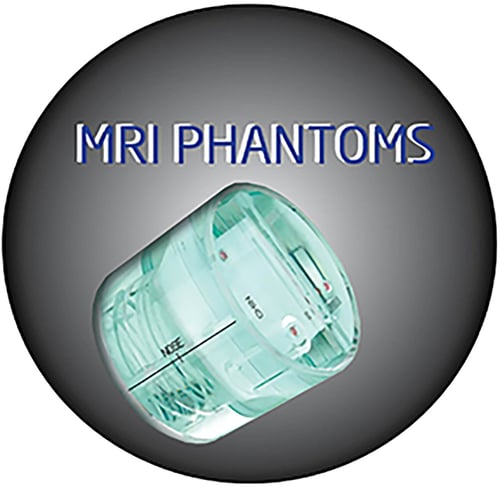MRI is one of the most popular and effective tools for the diagnosis of diseases. However, if an MRI image is distorted or unclean, it can lead to undiagnosed or missed diseases and delayed treatments. Without an accurate and quick diagnosis, treatment plans could be delayed and could even lead to more harm or even death to a patient. In addition, a misdiagnosis from a poor image quality could result in a costly malpractice suit.
it can lead to undiagnosed or missed diseases and delayed treatments. Without an accurate and quick diagnosis, treatment plans could be delayed and could even lead to more harm or even death to a patient. In addition, a misdiagnosis from a poor image quality could result in a costly malpractice suit.
So, how can you be producing high-resolution images of anatomical structures that will provide doctors with the information they need in order to provide an appropriate treatment plan for patients? By using MRI phantoms in calibration and quality control, you can get better image generation for more accurate diagnosis of diseases.
There are four more good reasons to use an MRI phantom for quality control in your clinical environment as well:
- The law requires a proper QC program for MR units in the U.S.
- Image testing is required as part of the quality control checklist for MR units
- By utilizing scheduled phantom tests, you can avoid costly malpractice suits
- These quality control efforts can ensure image integrity
The Medicare Improvement Patients and Providers ACT (MIPPA) is a part of U.S. Quality Control. In order for an MRI site to be accredited by the American College of Radiology, a series of measurements tested with an MRI phantom is required on a weekly/annual basis.
Before You Buy An MRI System
You can use phantoms to test different scanners you are considering for purchase. These phantoms assess the system’s stability and comparability of measurements across a variety of MRI units. When these tests are done with the same phantom among the different MRI units, you should see similar results. In fact, phantoms can be used to test other phantoms to determine their accuracy in the imaging field.
Which Phantoms Should You Use?
There is an accreditation phantom constructed of acrylate plastic, silicon rubber and glass that is required by the American College of Radiology (ACR). Ferromagnetic materials are excluded. This cylindrical unit is 20.4cm in diameter by 16.5cm in length. The internal dimensions are 19.0cm in diameter by 15.0cm in length.
Phantoms are available from a variety of vendors, and each has unique proprietary designs. They are all designed to test the integrity of MR images on all types of scanners.
You’ll want to make sure that your phantom is ACR accredited, contains reference points for chin and nose, are compatible with all cradles and includes a small all-plastic level to ensure the phantom is level.
Phantoms cost between $1,361-$3,000, with the price points being based on the materials that are used, the size and the accessories that are included. Your biomed team will be able to recommend a phantom that is appropriate for your practice.
When you perform a phantom test on an MRI unit, you will learn the following:
- RF or radio frequency
- static mag fields
- gradient amplitude
- slice position and profile
- geometric linearity
- image uniformity
- accuracy and precision of proton density
- Signal to Noise ratio (SNR)
- system constancy
Talk To An Expert
Do you have questions about phantoms, MRI machines or testing? Talk to the experts at Atlantic Worldwide. We’ve been helping clients find the ideal medical imaging solutions for more than 30 years and would love to help you. Contact Us Today!
Some blogs you may have missed:
- The Future of Helium & MRIs
- MRI Cold Head Tips
- Service Contracts for Imaging Systems: Penny Wise and Pound Foolish?
- Radiologists, Healthcare & Social Media
- Should your business lease or buy medical imaging equipment?
- Free MRI Resources
Meet the author: Vikki Harmonay



